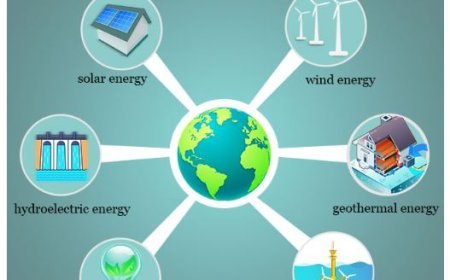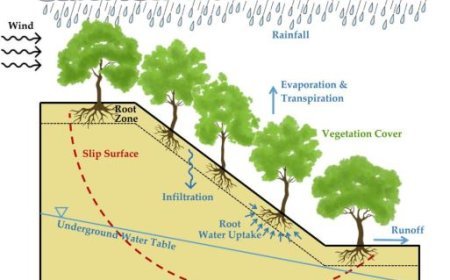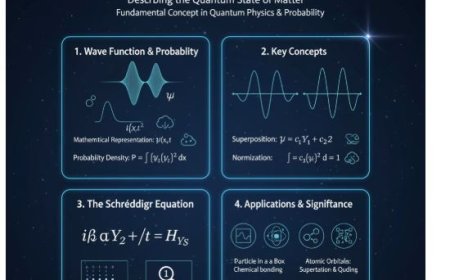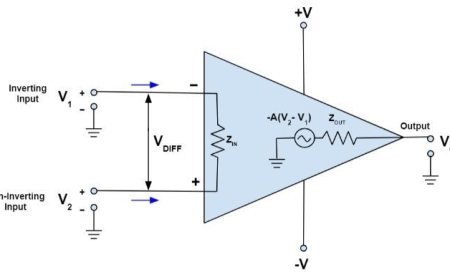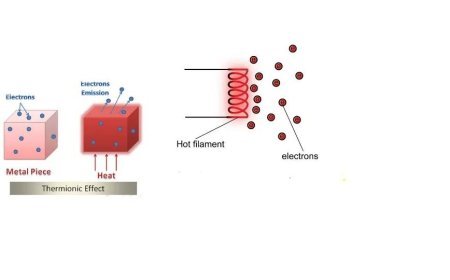Four-Factor Formula
The four-factor formula is a key concept in physics that explains how different factors interact to influence measurable quantities like light, sound, and radiation intensity. This article introduces the principle through the inverse square law, showing how power, distance, surface area, and intensity relate to one another. Understanding these relationships helps scientists and engineers predict how energy spreads through space. From astronomy and acoustics to radiation and lighting design, the four-factor formula provides a universal method for analyzing energy behavior, with applications extending to nuclear physics, reactor science, and accelerator technology.
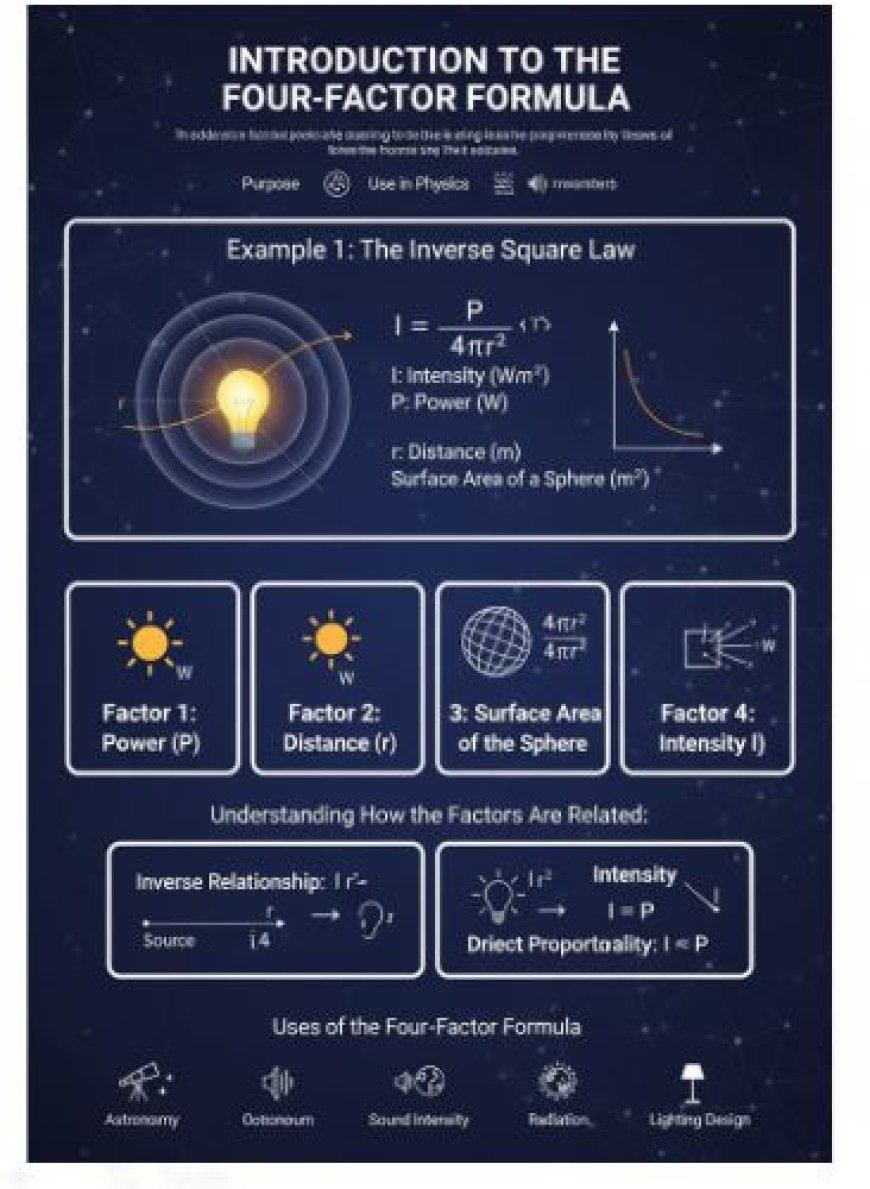
Introduction to the Four-Factor Formula
A four-factor formula in physics is an equation that uses four main variables to help solve a problem or explain a physical occurrence.
Purpose
These methods help make complicated real-world problems easier to understand by highlighting the main factors that affect results.
Use in Physics
The four-factor formula is used in different areas of physics. A common example is determining the strength of light or sound waves using the inverse square law. These models rely on four main factors that influence how energy moves or reacts in space.
Example 1: The Inverse Square Law
- The Inverse Square Law states that the brightness of light decreases as you move further from the light source.
- Specifically, if you double the distance, the light's intensity reduces to one-fourth of its original value.
- This means that light spreads out over a larger area the farther it travels from the source.
A basic and widely used example of a four-factor formula is the inverse square rule for light intensity, which explains how light dims as it spreads over a larger area.
Breaking Down the Four Factors
Factor 1: Power (P)
- Definition: Power is the rate at which energy is produced or emitted by a source. For light, it refers to the total energy a light source emits per second.
- Unit: Measured in Watts (W), equivalent to Joules per second (J/s).
- Effect: The greater the power (P), the more intense the light will be. A stronger light source emits more energy, making it brighter at any given distance.
Factor 2: Distance (r)
- Definition: Distance is the measurement of how far the observer or the point of interest is from the light source.
- Unit: Measured in meters (m).
- Effect: As the distance from the light source increases, brightness weakens because light spreads over a larger area.
Factor 3: Surface Area of a Sphere (4πr²)
- Definition: The formula 4πr² represents the surface area of a sphere with radius r. This is the region over which the light disperses.
- Unit: Measured in square meters (m²).
- Effect: As the distance increases, the surface area grows. The light intensity decreases because the same energy is spread over a larger area.
Factor 4: Intensity (I)
- Definition: Intensity refers to the amount of energy received per unit area. For light, it represents how bright it appears from a given point.
- Unit: Measured in Watts per square meter (W/m²).
- Effect:
- Direct relationship with power (P): A higher power source emits stronger light.
- Inverse square relationship with distance (r): As r increases, intensity decreases proportionally to 1/r².
Understanding How the Factors Are Related
- Inverse Relationship: The formula follows the inverse square law, meaning that if the distance doubles, the intensity reduces to one-fourth of its original value.
- Direct Proportionality to Power (P): If the power of a light source increases, the intensity increases proportionally.
- Brightness Perception: The brightness observed at a particular point depends on both the power of the source and the distance from it. A strong light source can compensate for distance-related loss.
Uses of the Four-Factor Formula
- Astronomy: The inverse square law is essential for determining how bright stars and other celestial objects appear from Earth. The farther a star is, the dimmer it looks.
- Sound Intensity: The same principle applies to sound waves. As distance increases, sound intensity decreases, which is crucial in acoustics for managing sound levels in large spaces.
- Radiation: This formula also explains how radiation spreads in space. For example, the intensity of sunlight reaching Earth follows the inverse square law.
- Lighting Design: In architectural and outdoor lighting planning, understanding how light diminishes over distance helps ensure adequate brightness in different areas.
What's Your Reaction?









